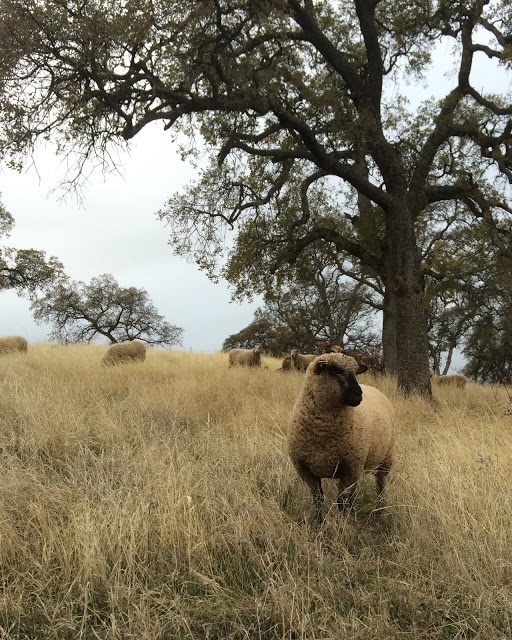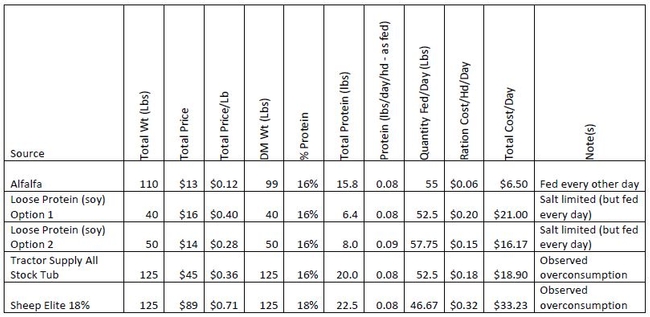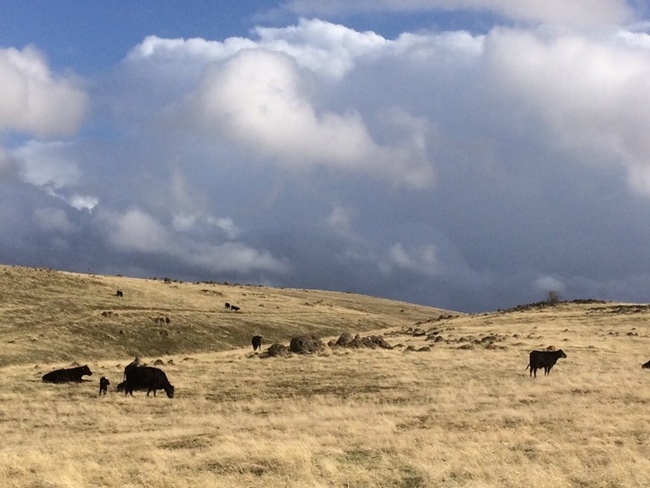…or what to do if it just won't rain!
Over the last thirty-plus years they've been keeping records at the UC Sierra Foothill Research and Extension Center (SFREC), we've received a germinating rain, on average, around October 21. A quick check of the 14-day forecast (through November 8) suggests that we'll be waiting more than two more weeks for this year's germinating rain – typical for the way the rest of 2020 has gone, I suppose! We've started thinking about how we're going to manage our sheep grazing through the rest of the year. We saved plenty of dry forage; our challenge is how to cost-effectively help our sheep use it.
Many of us have heard – and adopted – the adage, “Don't feed your way out of a drought.” This is easy to say, but more difficult to do, I think. After all, we've all made significant investments in our livestock. Our sheep fit our system and our landscape; we can't just sell out and expect to start up where we left off in terms of genetics. For me, anyway, the decision to feed or not to feed is more complicated than this oft quoted maxim. For one thing, there are differences to how we cope with short-term drought versus a longer term dry period.
Like many of you, we stock our rangelands and pastures conservatively, especially after the 2011-2015 drought. Going into fall with dry feed in reserve is like going into fall with a full woodshed – I find it comforting to know that we've saved enough forage to get us through a dry fall. But utilizing this dry forage requires us to supplement the protein in our livestock's diet. And supplemental protein can be expensive.
Ruminant animals can digest forage thanks to the microbes in their guts. To thrive – and to digest the cellulose in dry forage, these microbes need protein. On a maintenance diet, ewes (or cows) need a diet containing 7-8 percent protein. By this stage of the year, most of our dry annual grasses are between 4-5 percent. If we've stocked our ranches conservatively, we probably have plenty of this dry feed – the trick is getting enough protein into our livestock so that they can graze it!
In the last 5-6 years, we've tried a number of different protein sources. We've used molasses tubs from a variety of sources and with a variety of types of protein. We've used loose soy-based mixes that limit animal consumption by adding salt. And this year, we tried alfalfa hay. Heading into late autumn this year, we're planning to use alfalfa – mostly due to economic considerations.
Our experience with molasses tubs has been that some (all?) of our sheep seem addicted to the sweetness. We go through these tubs far more quickly than the label-indicated consumption rate would suggest. We've not found these tubs to be cost effective.
Several years ago, we switched to a loose protein supplement. These feeds use salt to limit intake; theoretically, an animal should only consume enough feed each day to get the optimal amount of protein. In our experience, the animals over-consume for several days before the salt has the desired effect – once they even out, they seem to do quite well on this protein.
But like the molasses tubs, loose protein is fairly expensive when considered from the perspective of cost per head per day. This summer, we put pencil to paper and decided to try feeding alfalfa hay. The loose protein needed to be consumed at a rate of 0.5 pounds per head per day. That meant our 84 ewes needed slightly more than one forty pound bag every day (for sake of ease, we fed just one bag per day). At $16 per bag, the cost started adding up.
As we analyzed our alternatives, we started by considering the quantity of protein the ewes needed (rather than the percent in their diet). The bagged protein was 16% protein, which meant that the sheep were supposed to consume approximately 0.08 pounds of protein each day. Good alfalfa sheep hay is also about 16% protein. In a 110-pound bale (figuring 90% dry matter to compare it to the loose protein), we'd have just under 16 pounds of total protein. If we fed a bale to our 84 ewes every other day, they would be getting just over 0.09 pounds of protein per day on average. The bagged protein cost us $0.19 per head per day; the alfalfa (at $14 per bale) was just over $0.08 per had per day. We fed alfalfa.
Obviously, the cost of purchasing the feed is not the only cost we need to consider. The loose protein, theoretically, can be feed in quantity, since the salt will limit intake. Hay on the other hand, has to be hand fed, which incurs a labor cost. But feeding one bale of alfalfa every other day was not a huge labor demand, considering we needed to check the sheep and feed the livestock guardian dogs every day anyway.
We also tried to objectively compare the nutritional status of the sheep prior to breeding this year (with hay) to previous years (with bagged protein). We collect body condition scores on all of the ewes before flushing (in late August). Last year, our average body condition score was 3.1 (on a scale of 1 to 5); this year, our average was just over 3.2. While I realize that two data points don't suggest a trend (and while there are other variables to consider), I do think that our more cost effective alternative (hay) yielded acceptable results. We got the ewes through the summer months on dry feed at less than half the cost.
All of this brings me back to this fall. Even if we get rain in the next three weeks, we won't have much green grass until December at the earliest (and remember, green equals protein). Fortunately, we saved a substantial amount of last spring's forage on our winter rangeland – from a volume perspective, we have enough feed to get through the rest of the year (if not longer). However, we will need to supplement protein to be able to utilize this dry forage. Based on our experience this summer, we'll be feeding alfalfa.
Here's a quick back-of-the envelope comparison of the cost of feeding molasses tubs versus loose protein versus alfalfa.
If you'd like to look at these alternatives for your operation, check out the Montana State University Sheep Ration Program. Oklahoma State University has a similar program for beef cattle, as does UC Davis.


